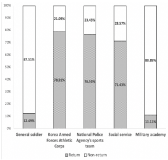PURPOSE This study theoretically explains the relationship between Keirin players’ core competencies and their performances. It also analyzes the impact of interaction between objectively identifiable core competencies and players’ efficiency toward their results, that is, the ability to convert their resources into performance. METHODS Using Python 3.11.1, 20,185 race records were collected of cyclists who competed at Gwangmyeong Velodrome in 2022 and 2023, and player efficiency was estimated using the R 4.3.1 package. Subsequently, the impact of players’ physical abilities (200 m records) on performance and player efficiency’s influence on the relationship between physical ability and performance were analyzed using Model 1 of PROCESS 4.1 Macro installed in SPSS 26.0. RESULTS First, players’ physical ability had a statistically significant impact on their performance. Specifically, the 200 m record significantly influenced the likelihood of finishing in the top 1 (coef = –.68 , p<.01 ), top 2 (coef = –.56, p<.01), and top 3 (coef = –.46, p<.01). Second, player efficiency moderated the relationship between players’ 200 m record and the likelihood of finishing within the top ranks. Specifically, the interaction term’s influence was empirically demonstrated between 200 m records and player efficiency on the likelihood of finishing within the top 1 (coef = –.47, p<.05), top 2 (coef = –.28, p<.05), and top 3 (coef = –.28, p<.05) for players with similar speeds, in that it significantly increased. CONCLUSIONS This study pioneers research that explains the relationship between players’ key competencies and performance based on resource-based theory, and it empirically demonstrates that player efficiency serves as a moderating variable in the relationship between key competencies and performance.
PURPOSE This study was conducted to refine and verify the argument by Berger & Pope (2011). Based on expectancy theory, we expected that the existence or type of regression discontinuity could vary depending on the situation and time in Korean Professional Basketball League. METHODS We conducted a regression discontinuity design using the R 4.3.1 package on the data of 4,531 games played during the 17 regular seasons (2006–2007 and 2022–2023) of the Korean Basketball League. We divided the sample into top-tier teams (1st and 2nd place) and mid to lower-tier teams (3rd to 10th place). Furthermore, we segregated the sample into the early phase of the regular season (1st and 2nd round) and mid to final phase of the regular season (3rd to 6th round). RESULTS First, a discontinuity of the regression was found after the third quarter. Second, the regression discontinuity appeared differently depending on the performance level. More specifically, discontinuity effects did not appear among the top teams whereas the regression discontinuity effects were identified among mid to lower-tier team samples. Third, the regression discontinuity appeared differently depending on the time point of the regular season (round). A discontinuity of regression line appears from the 3rd to 6th rounds in the Korean Professional Basketball League. CONCLUSIONS This research provides theoretical and practical contributions by systematically exploring that the probability of winning can vary even with the same score difference depending on the time point and situations perceived by the players.

Purpose In recent years, competition among companies has become more and more important to maximize the competitiveness of companies by improving their productivity through technological innovation. Increasing competitiveness through technological innovation is becoming an essential requirement for survival of companies. In order for companies to innovate, it is necessary to spend R&D investment and the government is strengthening various policy supports to do this. Athletic equipment industry classified as manufacturing industry in sports industry. In this study, considering the fact that manufacturing industry occupies a large part of Korea's R&D investment, we compared R&D intensities with athletic equipment industry and other industries. We also examined whether R&D investment has affected firm performance. Methods The data used in the analysis were extracted from KIS-DATA with KSIC codes of companies classified as sports and athletic goods manufacturing industry in the 9th Korean Standard Industrial Classification of National Statistical Office. The analysis period is five years from 2011 to 2015 to look at the current status. Looking at the number of companies extracted by year, it was 42 in 2011, 45 in 2012, 46 in 2013, 48 in 2014, and 39 in 2015. Results Research showed that the intensity of R&D of athletic equipment industry was 1.22% in 2011, 1.63% in 2012, 1.51% in 2013, 1.53% in 2014 and 1.30% in 2015. This was lower than the manufacturing industry, which was a category of athletic equipment industry, and lower than that of similar small and medium sized enterprises. The correlation between R&D intensities and the sales growth rate of firms showed a positive correlation in 2011 and 2015, but the correlation is not strong. Conclusion R&D investment in athletic equipment industry was not actively taking place, and R&D investment did not have a significant effect on the performance of the company.

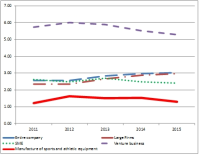
PURPOSE Sporting events constitute attractive platforms for providing participants with unique experiences. This study was aimed at investigating the structural relationships among perceived sporting event quality, image, trust, satisfaction, and loyalty of small-scale golf tournament participants. METHODS The questionnaire was structured in five dimensions: sporting event quality (4 sub-dimensions and 13 items), image (3 items), trust (3 items), satisfaction (3 items), and loyalty (4 items). A total of 217 amateur golfers from four Ecolian public golf clubs (Gwangsan, Jechon, Jeoungsun, and Younggwang) during the golf tournament participated in this study. Factor, reliability, validity, and structural equation model analyses were performed utilizing SPSS 24.0 and AMOS 24.0. RESULTS This study indicated that sporting event quality in a small-scale sporting event was the crucial factor of image, trust, and satisfaction, which, in turn, significantly impacted loyalty. CONCLUSIONS The results of this study contribute to theoretical understandings of sporting event quality factors that predict sport consumers’ image, trust, and satisfaction in the context of sports and leisure. Additionally, this study offers practical suggestions for administrators who develop marketing strategies for small-scale sporting events.
PURPOSE Using GPS data from actual field hockey matches, this study examined the effects of position and substitution time on the physical performance of elite female players. METHODS From 25 matches played in 2023, data involving 26 players were collected. Players’ positions were classified as forwards (FW), midfielders (MF), and defenders (DF). Substitution times were segmented into 5, 10, and 15 minutes, respectively. A two-way ANOVA was employed to analyze movement patterns across different exercise intensities as influenced by player position and substitution time, followed by Bonferroni post-hoc tests for further detailed analysis. RESULTS Analysis revealed that both position and substitution time significantly affected exercise intensity. Notably, at a substitution time of 5 minutes, substantial differences were observed in high-intensity movements, including the distance covered at high-intensity and the frequency of high-intensity efforts. Furthermore, the substitution time’s impact was particularly pronounced among forwards and midfielders. CONCLUSIONS Findings suggest that shorter substitution times can enhance players’ active movement, thereby supporting maintenance of tactical adjustments and positively influencing overall performance. Implementing shorter substitution times could be particularly beneficial for optimizing team performance, especially for players in forward positions.
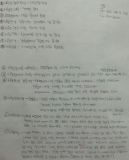
Values, such as development and social responsibilities, are added on victory-oriented Korean sport. Those change of values are along with discussions regarding improvement of players’ training environment, however, discussions on improvement of players’ training environment so far rather focused on ideological concepts, such as players’ holistic human development and human rights, therefore, there was a lack of discussion on practical training methods or teaching methods. This study focused on mental coaching as a specific method for improvement of players’ training environment. Mental coaching provides players with performance enhancement, personal growth, and self-actualization utilizing mental training, consulting, and mentoring in their training processes. This study examined a possibility of introduction of mental coaching as a training camp method for players by creating a training camp reflected on mental coaching perspectives and verifying the program effects of application. First of all, a mental coaching training camp was created through consultations with mental coaches, supervisors, and coaches. Goals of the mental coaching training camp were development of competition-routines, establishment of competition-circumstance coping strategies, comprehension of elite-players’ psychological resources, goal-setting, and motivation and the program consist of badminton competitions, mental education, a special lecture by an Olympic gold medalist, tracking, and sharing. The mental coaching training camp proceeded with middle and highschool badminton players and 31 coaches during three-days and four-nights. As results, the training camp was effective for players’ performance enhancement, personal growth, and self-actualization and team coaches realized a necessity of improvement in terms of their training and teaching behaviors. In other words, mental coaching training camp played a role as a source of long-term change as well as short-term results, thus, this study verified that the mental coaching can be introduced as a training camp method. It is anticipated that this study can provide sport fields and academic sport areas with an opportunity to consider both training contents and methods when it comes to discussion players’ training environment development.

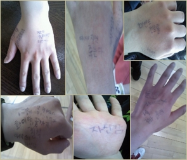
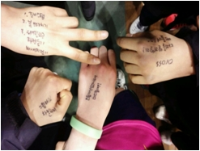
The purpose of this study was to examine psychological capital acquisition through Asian Games Participation. 17 of national women football players were completed Psychological Capitals Questionnair. The psychological capital consists of optimism, psychological skills, self-management, collective efficacy, and performance perception was investigated after the team call-ups and before the team-release. The data was analyzed by paired t-test. As results, Korean women football players’ collective efficient and performance perception showed a statistical significance at the beginning of the team call-ups but optimism, psychological skills, and self-direction did not show statistic significances. The team-harmony, interpersonal-management, team-power, sufficient training, trust in coach, efficient communication, and psychological football factors, which were subfactor of football players’ psychological capital, showed statistical significances. However, confidence, concentration, goal-setting, imagery, willpower, anxiety-control, mental-management, life-management, training-management, innate-behavior management, physical-management, football skills, mediative skills, and football intelligence factors did not have statistic significances. These results demonstrate that effects of mega sporting events-like experiences and psychological factors’ variability and inflexibility according to weather changes should be considered when it comes to discussion of psychological factors regarding players’ performance. It is expected that this study would be a fundamental resource for understanding of psychological influences through participations in mega sporting events and discussions about further psychological interventions for teams with environmental consideration as well as methodological developments which could measure effects of the psychological interventions.

Purpose The purpose of this study was (1) to develop and to apply the PE classes based on Sportscasting Model on Creativity and Character and (2) to analyze the effects of PE classes on Creativity and Character. Methods Participants were 10th high school students(N=172) who had not experienced PE classes on Sportsasting Model. Data were collected using An Integrated Creativity Test(Lee & Lew, 2012), open-ended questionnaires and in-depth interviews with students. The data were analyzed through paired samples t-test and qualitative content analysis. Results Results showed that (1) Table-tennis and volleyball lessons on Sportscasting Model were developed and applied, and (2) significant differences were observed in creative thinking and creative personality of students’ creativity scores after lessons. And 14 creativity factors and 10 character factors were drawn from the analysis of questionnaires and interviews. Conclusion And to conclude, Sportcasting Model is efficient in developing creativity and character. Discussions were provided in terms of the development and application of PE classes based on Sportsasting Model and the effectiveness of Sportscasting Model.



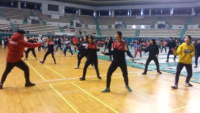
Purpose The purpose of this study was to investigate the effects of 3 weeks of fencing specific training on physical fitness in elite fencers. Methods Forty eight elite fencers participated in this program (Male= 24, Female= 24). Training program consists of dynamic stretching, step and agility training, and it was conducted with the general fencing practice during 3 weeks. Body composition and physical fitness (muscle strength/power, agility, anaerobic power and flexibility) were measured before and after training. Data were analyzed using IBM SPSS Statistics ver. 23.0 (IBM Co., Armonk, NY, USA). Paired t-test (pre vs. post) was used for comparison between groups. Results Muscle mass and body fat(%) were significantly changed after training in male group. Agility was significantly improved in change-step jump and reaction time after training both in male and female group. In Anaerobic power, peak power (relative power, absolute power) was significantly increased after training in female group. Flexibility was also significantly improved after training in left ankle ROM of female group. Conclusion Application of fencing specific training program focused on fencing movement seems to be effective on agility in both groups, muscle mass and body fat(%) in male group, and anaerobic power and flexibility in female group.

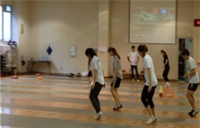


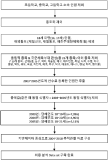
Purpose The purpose of this study is to identify the negative effects of long-term exercise (training and competition) suspension of male elite athletes due to compulsory military service on athletic performance, and to provide a basis for enhancing the importance of providing support systems and social conditions for maintaining athletic performance. Methods In this study, 17,418 male athletes aged 18 to 21 who were registered as athletes for the Korean Sports & Olympic Committee from 2003 to 2005 were enrolled. The athlete registration data includes information about the athlete's gender, age, sport and affiliation. According to the continuity of registration and belonging information, the compulsory military service type was classified into a manipulator. According to the form of Compulsory military service performed by male elite athletes, the return rate was confirmed and the career (year) was calculated. Results As a result of the survey, 12.49% of the athletes who served as general soldiers returned to the athletes after compulsory military service, showing a relatively low return rate compared to 78.91% of the Korea Armed Forces Athletic Corps, 76.55% of the National Police Agency's sports team, and 71.43% of the social service. Also, Athletes who served as general soldiers had a career of 2.46 years (± 1.94), while the Korea Armed Forces Athletic Corps was 10.21 years (± 3.58), the National Police Agency's sports team was 9.45 years (± 3.26), and the social service was 5.86 years (± 4.06), The exemption was 11.08 years (± 2.27), and the compulsory military service exception was 9.79 years (± 5.55). Conclusions Male elite athletes' decrease in athletic performance after compulsory military service is a natural result, as confirmed through the results of this study, and it is necessary to seek a support system between compulsory military service to maintain athletic performance.

